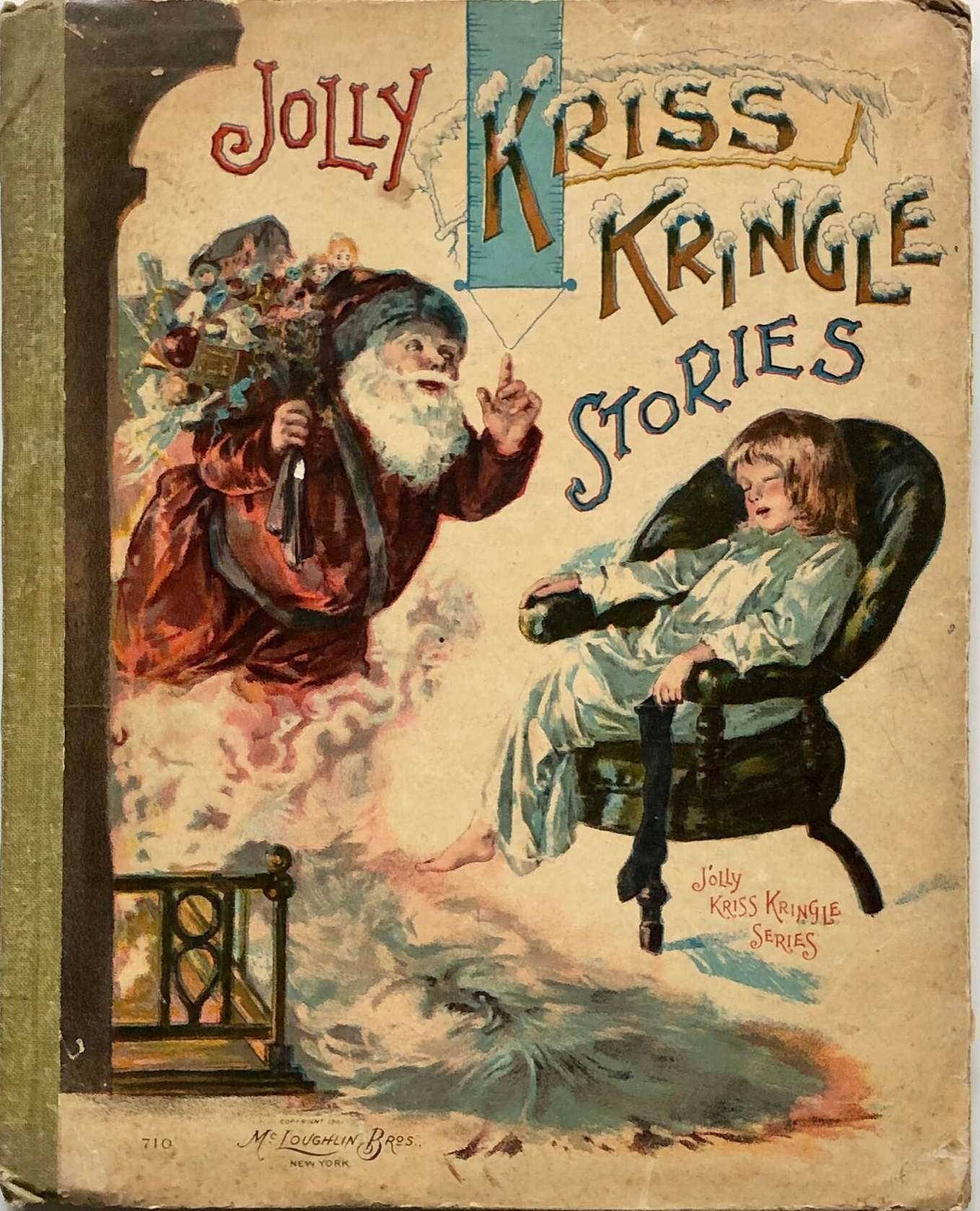
In mid-nineteenth-century America, the elfin gift-bringer had more than one name depending on his locale. In New York he was Santa Claus or St Nicholas; in Philadelphia he was Kriss Kringle or Belsnickel. At one time, as we have seen these names meant very different characters, Kriss Kringle was an American corruption of das Christkindl, the Christchild, portrayed either as an infant or as a white-clad adolescent; Belsnickel was a shaggy and fearsome creature, often accompanying St Nicholas or the Christchild. By the 1840s, however, the allure of Santa Claus was such that though Pennsylvanians clung to the familiar names, the gift-bringer they were attached to was that described by Clark Clement Moore in “ ‘Twas The Night Before Christmas”. We can see this in works published in Philadelphia such as Kriss Kringle’s Book and Kriss Kringle’s Christmas Tree where the generous elf in question is clearly the newly minted Santa Claus and no Germanic import. In an 1855 article in Putnam’s Monthly, the narrator, Mr. Sparrowgrass implores his wife to mind her language:
“My dear,” said I after a pause, “speaking of children I wish you would not teach the young ones so many of your Philadelphia phrases….Mrs. Sparrowgrass, next Christmas Santa Claus, if you please – no, Kriss Kringle. Santa Claus is the patron saint, Mrs. Sparrowgrass, of the New Netherlands, and the ancient Dorp of Yonkers; he it is who fills the fireside stockings; he only can come down Westchester chimneys, and I would much prefer not to have the children’s minds and the flue occupied with his Pennsylvania prototype.”